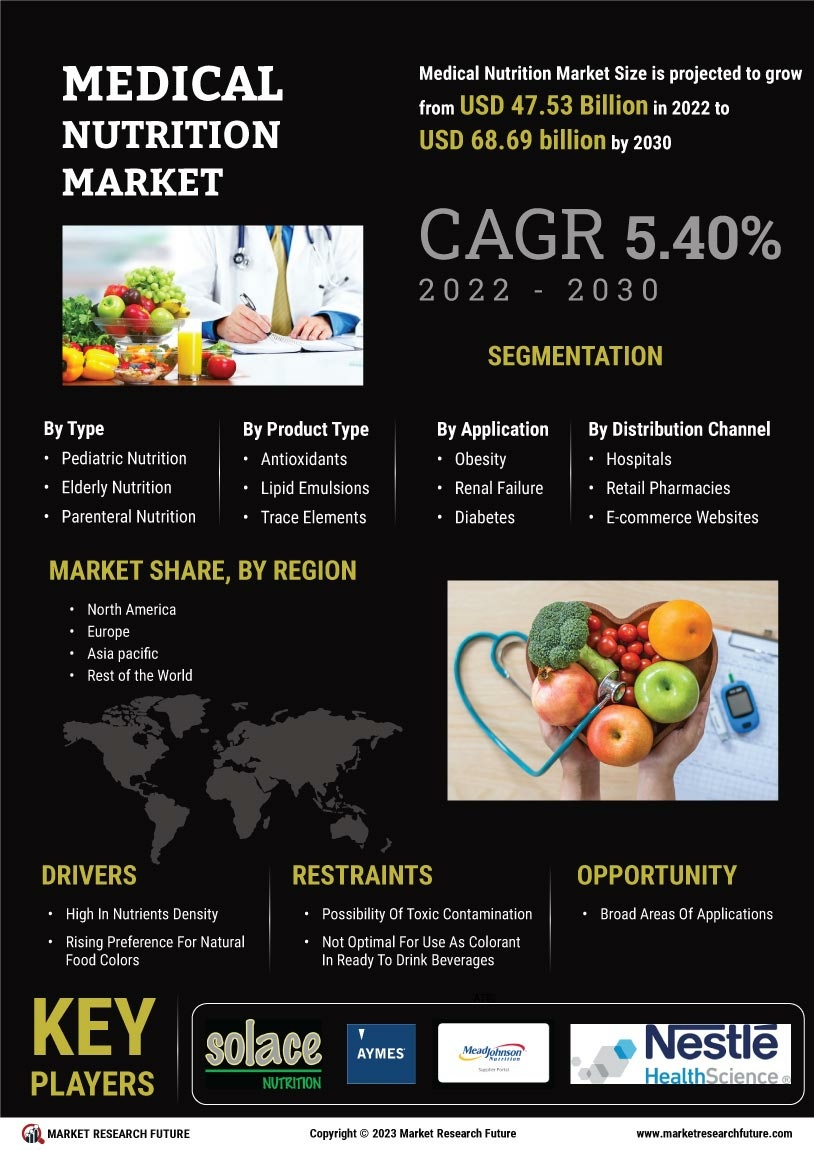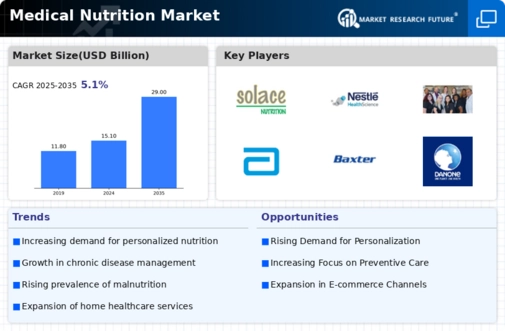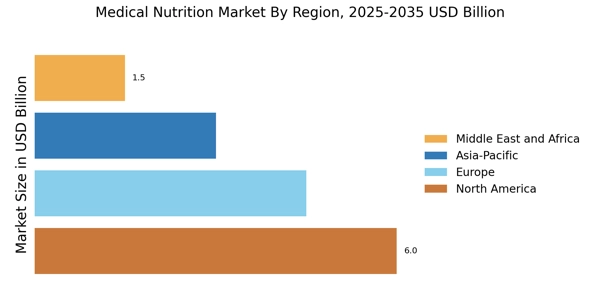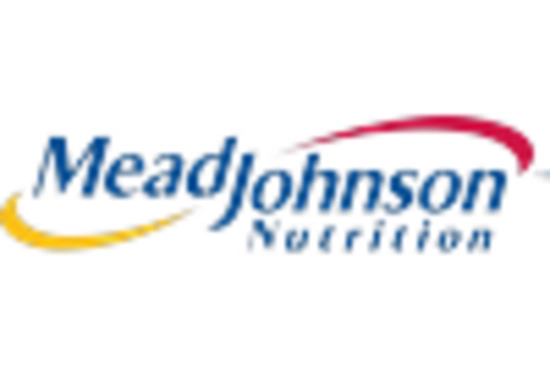Aging Population
The demographic shift towards an aging population is significantly influencing the Medical Nutrition Market. As individuals age, their nutritional needs evolve, often requiring specialized dietary interventions to maintain health and quality of life. Data indicates that by 2030, the number of people aged 60 and older will surpass 1 billion, creating a substantial demand for medical nutrition products tailored to this demographic. Nutritional deficiencies in older adults can lead to various health complications, making it imperative for healthcare providers to incorporate medical nutrition into care strategies. This trend suggests a robust growth trajectory for the market, as companies innovate to meet the unique needs of older consumers.
Rising Prevalence of Chronic Diseases
The increasing incidence of chronic diseases such as diabetes, obesity, and cardiovascular disorders appears to be a primary driver for the Medical Nutrition Market. As healthcare systems shift towards preventive care, there is a growing emphasis on nutritional interventions to manage these conditions. According to recent data, nearly 60% of adults are living with at least one chronic disease, which necessitates tailored nutritional solutions. This trend is likely to propel the demand for specialized medical nutrition products designed to support disease management and improve patient outcomes. Consequently, healthcare providers are increasingly recommending medical nutrition as a vital component of treatment plans, thereby expanding the market's reach and potential.
Technological Advancements in Nutrition
Technological innovations are reshaping the Medical Nutrition Market, offering new opportunities for product development and consumer engagement. Advances in food science, biotechnology, and digital health are enabling the creation of personalized nutrition solutions that cater to individual health profiles. For instance, the integration of artificial intelligence in dietary planning is allowing for more precise recommendations based on genetic and lifestyle factors. This trend is expected to enhance the effectiveness of medical nutrition products, thereby attracting a broader consumer base. Furthermore, the rise of telehealth services is facilitating access to nutritional counseling, which may further drive the demand for medical nutrition solutions tailored to specific health conditions.
Increased Awareness of Nutritional Health
There is a growing awareness of the importance of nutrition in overall health, which is driving the Medical Nutrition Market. Consumers are becoming more educated about the role of diet in preventing diseases and enhancing well-being. This heightened awareness is reflected in the rising demand for medical nutrition products that cater to specific health needs, such as weight management and immune support. Market data shows that the medical nutrition segment is expected to grow at a compound annual growth rate of over 8% in the coming years. As individuals seek to optimize their health through nutrition, the market is likely to see an influx of innovative products designed to meet these evolving consumer preferences.
Regulatory Support for Nutritional Products
Regulatory frameworks supporting the development and marketing of medical nutrition products are playing a crucial role in the Medical Nutrition Market. Governments and health organizations are increasingly recognizing the importance of nutrition in public health, leading to the establishment of guidelines and standards for medical nutrition products. This regulatory support not only enhances consumer confidence but also encourages manufacturers to invest in research and development. As a result, the market is witnessing a surge in innovative products that comply with safety and efficacy standards. The alignment of regulatory policies with health objectives is likely to foster a conducive environment for market growth, as stakeholders collaborate to improve nutritional outcomes.


















Leave a Comment